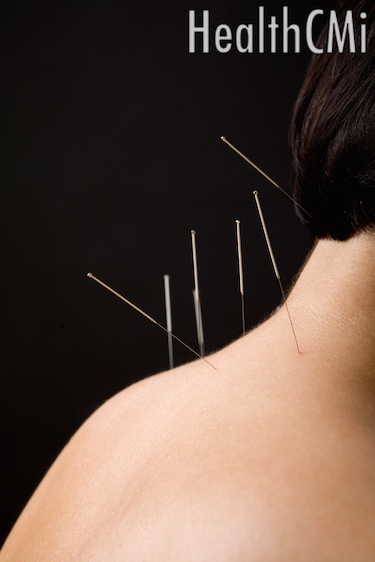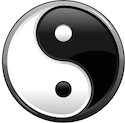Acupuncture is highly effective in reducing neck pain and restoring range of motion. A study comparing two manual acupuncture techniques finds one technique has a very high total effective rate and recovery rate. A second technique examined in the study, although effective, had lower scores. A computer monitoring thermographic changes within the neck measured significantly higher neck temperatures induced by the superior acupuncture technique. The researchers link the ability of this acupuncture technique to reduce pain with its ability to warm the neck. 
The setting the mountain on fire (Shao Shan Huo) needle manipulation technique produced a complete recovery rate of 68.3% and a total effective rate of 98.3%. The even reinforcing-reducing technique produced a 28.3% complete recovery rate and an 81.7% total effective rate. Complete recovery from neck pain was determined by the following criteria: no remaining symptoms, complete improvement of positive signs, normal neck range of motion. The total effective rate was calculated by adding the following groups: complete recovery, significant improvements, and slight improvements.
Needles were applied to local acupuncture points of the neck known as Huatuojiaji acupoints. The Huatuojiaji points were needled lateral to the cervical vertebrae from C4 to C7. In classical Chinese medicine texts, Huatuojiaji points begin below C7 at T1, however, modern day licensed acupuncturists often use Huatuojiaji points located 0.5 to 1 cun lateral to the cervical vertebrae. Needle retention time for both acupuncture technique groups was 20 minutes following manual needle manipulation techniques. All needles were 0.30 mm x 40 mm. All patients were treated one time per day with ten treatments comprising one course of care. The results were tabulated after two courses of treatment.
The setting the mountain on fire technique demonstrated significantly superior objective and subjective clinical outcomes. The researchers note that this technique was first described in the Jin Zhen Fu (Ode to the Gold Needle), a Traditional Chinese Medicine (TCM) classic text written during the Ming Dynasty. They add that modern studies confirm that the setting the mountain on fire technique increases blood circulation to the limbs and induces “dilation of capillaries.”
This study compared two standard acupuncture techniques used for the treatment of cervical radiculopathy. This condition was the inclusion requirement for participation in the study. All participants had cervical radiculopathy characterized by neck pain that radiates to the upper limbs, decreased sensation in the irritated nerve pathway, muscular atrophy, and decreased muscle strength. Objective measurements for cervical radiculopathy included the following inclusion criteria: positive Spurling sign, positive brachial plexus tension test, X-rays showing vertebral bone hyperplasia, joint hyperplasia, intervertebral space narrowing, decreased intervertebral foramen size, CT or MRI scan demonstrating “vertebral outgrowth and nerve root canal stenosis.” An additional inclusion criterion was the Traditional Chinese Medicine diagnosis of “neck pain due to wind-cold obstructing the meridians.”
A total of 120 patients met the criteria for inclusion and were randomly divided into the setting the mountain on fire and even reinforcing-reducing acupuncture groups. Both groups demonstrated high levels of efficacy but the complete recovery rate of the setting the mountain on fire group was significantly superior at 68.3% versus the even reinforcing-reducing group at 28.3%.
For centuries, patients have reported a warm sensation induced by use of the setting the mountain on fire acupuncture technique.  This study demonstrates that this is a physiologic effect and is not limited to a psychological event. Thermograms measuring changes in infrared levels demonstrate a clear rise in temperature induced by the setting the mountain on fire technique. This is consistent with the Traditional Chinese Medicine principle that this technique warms and unblocks the channels, dissipates cold, and alleviates pain.
This study demonstrates that this is a physiologic effect and is not limited to a psychological event. Thermograms measuring changes in infrared levels demonstrate a clear rise in temperature induced by the setting the mountain on fire technique. This is consistent with the Traditional Chinese Medicine principle that this technique warms and unblocks the channels, dissipates cold, and alleviates pain.
References:
Sun, Yi-jun, Yao-chi Wu, Jun-feng Zhang, Yan Li, and Ying Wang. "Therapeutic efficacy observation on ‘setting fire on the mountain’ manipulation by Lu Shou-yan for cervical radiculopathy." Journal of Acupuncture and Tuina Science 12, no. 6 (2014): 331-334.
Ming Dynasty. Xu Feng. Zhen Jiu Da Quan (Great Compendium of Acupuncture and Moxibustion). Beijing: People’s Medical Publishing House, 1958: 62-63.
Yang F, Xie W, Yang YK. Research advance and reflections on needling technique of ‘setting fire on the mountain’. Zhenjiu Linchuang Zazhi, 2008, 24(6): 57-58.
Gu JQ. Therapeutic observation on supreme deep-needling at cervical Jiaji (EX-B 2) points for cervical spondylosis of neck type. Shanghai Zhenjiu Zazhi, 2013, 32(5): 382-383.
Sun YJ, Wu YC, Zhang JF, Zhang P, Tang ZY. Effects of electroacupuncture on muscle state and electrophysiological change in rabbits with lumbar nerve root compression. Chin J Integr Med, 2013, 19(6): 446-452.


